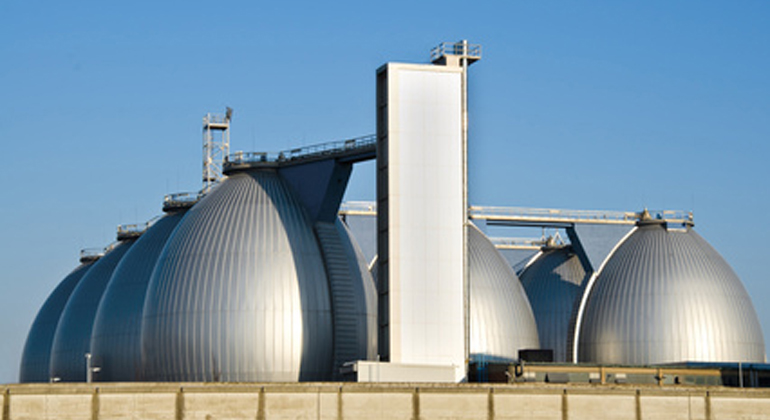Renewable energies reduce dependency on natural gas
In view of the high share of natural gas used for the production of space and process heating the European Commission recommends increasing the production of heat and cold from renewable energies.
This would not only reduce CO2 emissions but also the European Union’s dependency on natural gas. For this proposal of a heating and cooling strategy for Europe the EU Commission has also drawn on the results of a research project conducted by the Fraunhofer Institute for Systems and Innovation Research ISI.
The research project “Mapping EU heat supply” coordinated by Fraunhofer ISI calculated for the first time the energy consumption of the industry, the service and the residential sector for different end-uses for the individual Member States. The EU wide applications give a detailed picture of heat and cold production in Europe and the use of fossil and renewable energy carriers to supply space heating, warm water and air conditioning in buildings as well as process heat and cold in industry and the service sector.
Project manager Dr. Tobias Fleiter of Fraunhofer ISI sums up, “Half of the entire final energy consumption in the EU is used to produce heat and cold. 50% of this is for generating space heat, to a large extent in residential buildings. Roughly one third is used for process heat in industry. Air conditioning and process cooling, mainly in the chemical and food production industries, accounts for only about five per cent and represents a relatively small share. Air conditioning, however, shows the highest growth so that it will become more significant in future”. The share of renewable energies is still too small, “Only 18 per cent of the EU’s primary energy use are covered by renewable energies, while natural gas accounts for a share of 45 per cent and therefore is the most important energy carrier” according to Fleiter.
At the same time the technologies used for heat production are often outdated, adds Dr. Jan Steinbach, who managed the project at Fraunhofer ISI together with Tobias Fleiter, “58 per cent of coal boilers, 45 per cent of oil-fired boilers and 22 per cent of natural gas boilers are more than 23 years old and have therefore passed their technical life span. In industry too old plants are prevalent: More than half of the steam turbines used for heat and power cogeneration are more than 23 years old”.
Due to this detailed account of heat and cold generation in Europe the EU Commission has been able to formulate specific policy recommendation as part of their proposal on a heat and cold strategy: Amongst other things, the Commission asks the Member States to consistently promote energy-efficient heating and cooling supply, particularly in households affected by energy poverty. Furthermore, the Member States should increasingly involve associations in order to provide the public with better information. Last but not least, the Commission recommends addressing the owner-tenant-dilemma as this is a crucial obstacle for investments in building insulation: Typically the owner has to bear the costs while the tenant profits from lower energy consumption.
Moreover, the Commission plans to revise its directives for energy efficiency, renewable energies and buildings in such a way that they include more elements which build on heat and cooling supply based on renewable energies: Examples are a faster exchange of old boilers by energy-efficient technologies based on renewable energies, accelerated building renovations, stronger linkage of heat and electricity sectors, the enhanced role of energy audits and supporting cities and municipalities in making better use of their waste heat.
The heat and cold strategy is currently only a proposal by the EU Commission which is now discussed by the European Council and Parliament.
In the second part of the research project “Mapping EU heat supply” Fraunhofer ISI and its project partners calculate scenarios which show the development of the heat and cold sector in Europe until the year 2030. Policy measures are investigated which contribute to a more efficient design of heat and cold production and promote the increased use of renewable energies which in turn would contribute to reducing the dependency on importing fossil energy carriers. The results will be published in summer 2016.
About “Mapping EU heat supply”
The project “Mapping EU heat supply” [Mapping and analyses of the current and future (2020 – 2030) heating/cooling fuel deployment (fossil/renewables)] was commissioned by the European Commission. Project partners are the Fraunhofer Institute for Solar Energy Systems ISE, the Institute for Resource Efficiency and Energy strategies (IREES GmbH), Observ’ER energies renouvelables.org, the TEP Energy GmbH and the TU Vienna Energy Economics Group.
Further information
Source
Fraunhofer Institute for Systems and Innovation Research ISI 2016








